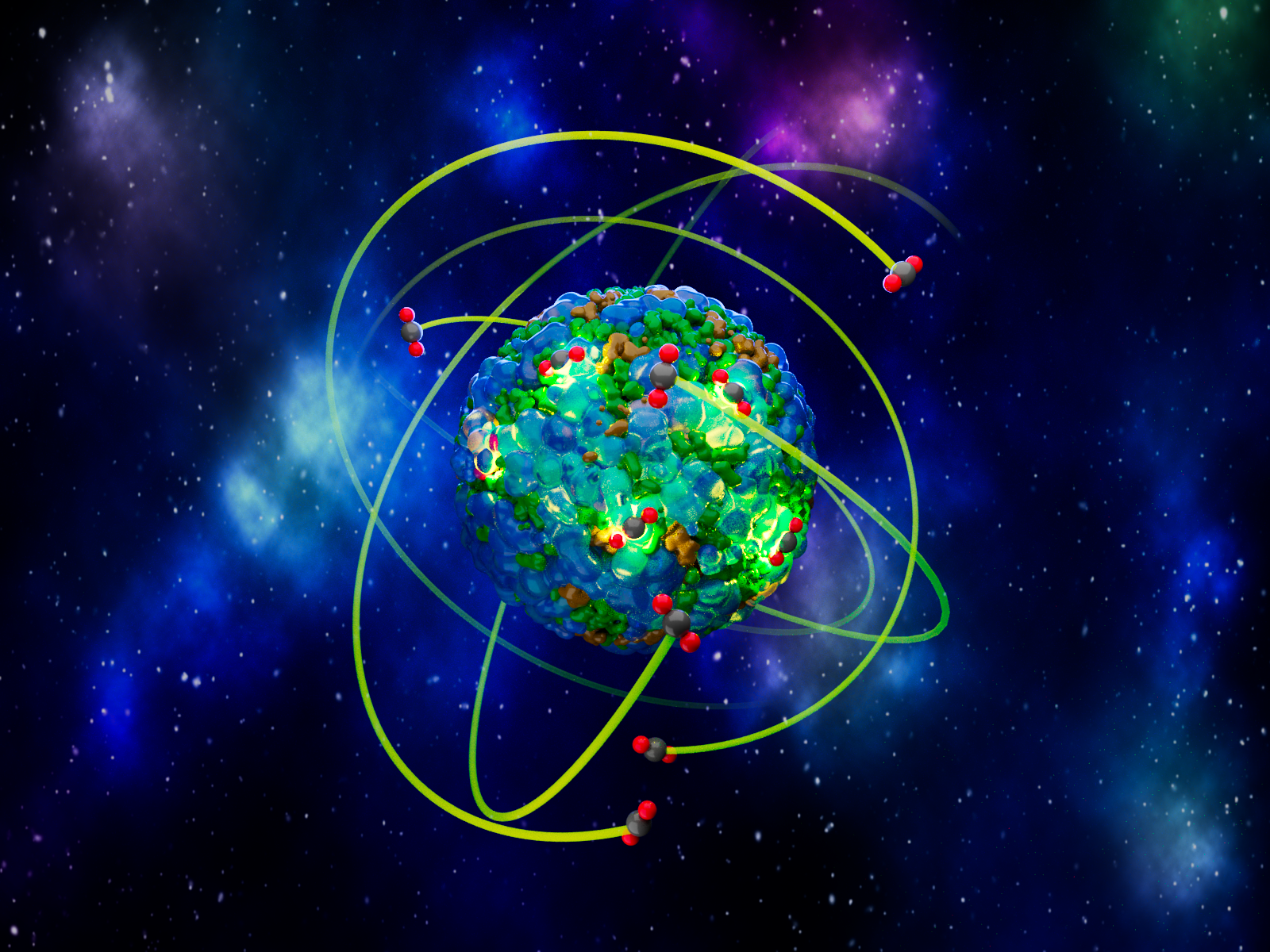Guiding the Development of Carbon Dioxide Capture Solvents Through Advanced Theory and Simulations
Providing perspective on the importance of integrating experimental work with theory and simulations to design new carbon capture solvents

To effectively develop carbon dioxide capture solvents, researchers need to take an integrated approach that combines experimental and computational work.
(Illustration by Cortland Johnson | Pacific Northwest National Laboratory)
The Science
Carbon dioxide, or CO2, is a major greenhouse gas emitted into the atmosphere by human activities. Designing CO2 capture solvents involves optimizing multiple properties in a complex chemical space. In a new perspective paper, a research team explores the use of atomic-scale modeling for computing the reaction energetics and transport properties of chemically complex CO2 capture solvents. Different modeling methods are suggested for characterizing different properties. Overall, insights from theory and simulations can provide key information for researchers trying to balance competing factors important to the CO2 capture process.
The Impact
Effectively developing CO2 capture solvents requires an integrated approach that combines experimental and computational work. This detailed study compares theoretical and computational approaches to allow researchers to make informed choices when determining which methods to use. CO2 capture solvent research should provide more efficient and cost-effective ways to sequester CO2 from industry sources and directly capture it from the atmosphere, both in support of decreasing global warming effects.
Summary
Modeling carbon capture solvents enables us to predict how changes in the structure of these solvents affect their properties, with the goal of improving their potential to capture carbon. A research team sought to bring together information from across the literature, combine it with their own expertise, and offer a broad perspective on using computational approaches to inform the design of CO2 capture solvents.
Simulations can help researchers balance different, sometimes competing, properties to optimize a new design for CO2 capture solvents. The team was invited to offer their perspective on the challenge areas, including the need to use multiple modeling methods that operate at different levels of accuracy. For example, while the accuracy of quantum chemical calculations is helpful for studying the reactivity of a few hundred atoms, such simulations are impractical for studying bulk solvent structure. The team outlined a plan identifying which method(s) should be used to characterize different properties of interest. Understanding the strengths and weaknesses of different computational approaches is key to successfully integrating theory and simulations into the solvent development process.
PNNL Contact
Difan Zhang, Pacific Northwest National Laboratory, difan.zhang@pnnl.gov
Funding
This work was supported by the Department of Energy (DOE) Office of Science, Office of Basic Energy Sciences under project number 76830.
Published: June 3, 2022
Kollias, L., Zhang, D., Allec, S., Nguyen, M., Lee, M., Cantu, D., Rousseau, R., Glezakou, V. "Advanced theory and simulation to guide the development of CO2 capture solvents,” ACS Omega, 7(15), 12453-12466, (2022). [DOI: 10.1021/acsomega.1c07398].